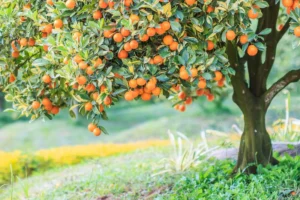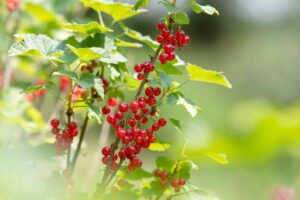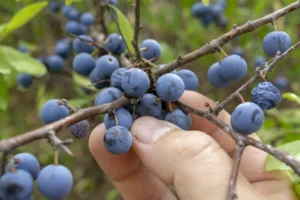How to Grow and Care for Suriname Cherry: A Complete Guide
Suriname cherry (Eugenia uniflora), also known as Brazilian cherry or Pitanga, is a tropical fruit-bearing shrub that’s gaining popularity among home gardeners in the United States, particularly in USDA zones 9-11. With its attractive glossy foliage, fragrant white flowers, and distinctive ribbed fruits that transition from green to bright red when ripe, this versatile plant can beautify your landscape while providing delicious, vitamin-rich fruits. Whether you have a spacious garden, limited outdoor space for container gardening, or even an indoor growing area, you can successfully grow this exotic fruit at home.
Introduction to Suriname Cherry
Native to eastern South America, Suriname cherry has adapted well to the warmer regions of the United States. The plant makes an excellent ornamental addition to gardens while producing edible fruits that are rich in vitamins A and C, antioxidants, and essential minerals. Before diving into cultivation techniques, let’s get familiar with the basic characteristics of this interesting plant.
Basic Characteristics and Growing Requirements
Suriname cherry thrives in:
- Full sun to partial shade
- Well-draining, slightly acidic soil
- Warm temperatures (ideally 60-85°F)
- Protected areas with moderate humidity
The plant typically grows as a multi-stemmed shrub reaching 8-15 feet tall but can be trained as a small tree or maintained at a smaller size through regular pruning. In the U.S. market, you’ll find Suriname cherry increasingly available at specialty nurseries and online retailers, reflecting growing consumer interest in unusual edible landscaping options.
Starting Your Suriname Cherry from Seeds
Growing Suriname cherry from seeds requires patience but can be highly rewarding. Here’s how you can start this process:
Seed Collection and Preparation
To grow Suriname cherry from seeds:
- Collect fully ripe fruits that have reached a deep red or maroon color.
- Remove the pulp and wash the seeds thoroughly.
- Plant seeds immediately for best germination rates, as they lose viability quickly when dried.
- Use a seed-starting mix in small pots or seed trays, planting seeds approximately ¼ inch deep.
- Keep soil consistently moist but not waterlogged.
- Maintain temperatures between 70-80°F for optimal germination.
Seed germination typically occurs within 2-4 weeks but can sometimes take longer. Be patient and maintain consistent moisture during this period. According to research from the USDA Agricultural Research Service, fresh Suriname cherry seeds have a germination rate of approximately 70-80% when properly handled (USDA ARS).
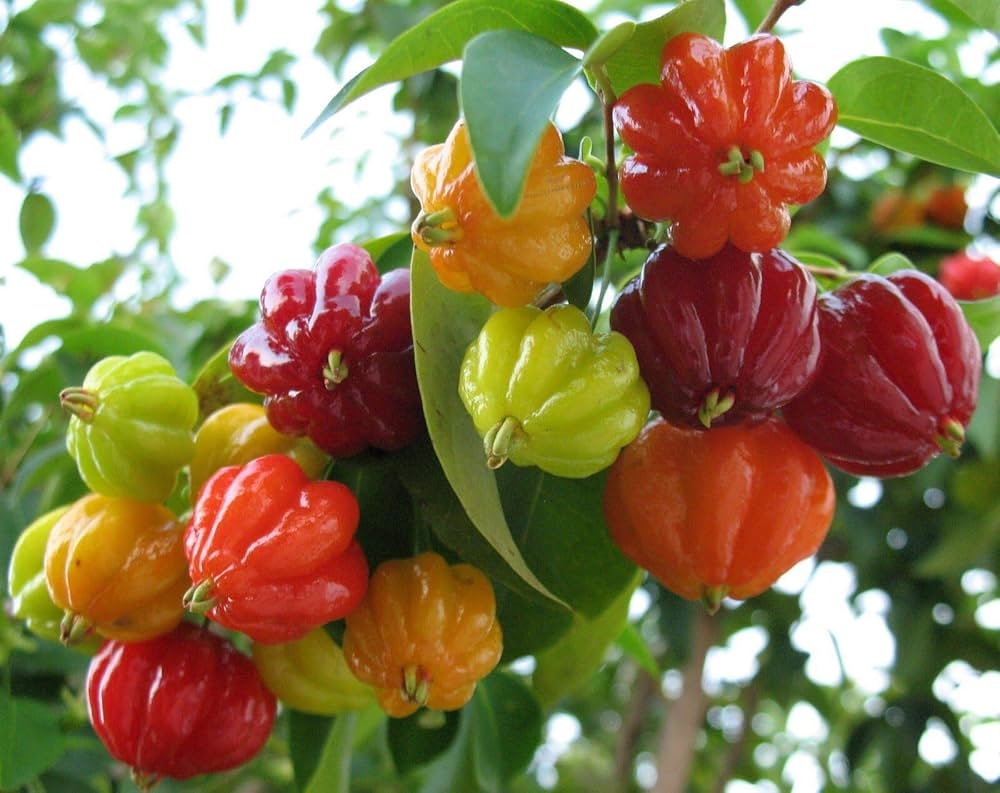
Growing Suriname Cherry in Garden Beds
When planting Suriname cherry directly in your garden, proper site selection and preparation are crucial for success.
Site Selection and Soil Preparation
Choose a location that:
- Receives at least 6 hours of sunlight daily
- Is protected from strong winds
- Has well-draining soil
- Allows enough space for the mature plant (8-10 feet in all directions)
Prepare your soil by:
- Testing pH levels (aim for 5.5-6.5)
- Incorporating organic matter like compost or well-rotted manure
- Ensuring good drainage by creating raised beds if necessary
- Adding a layer of mulch to retain moisture and suppress weeds
Planting and Initial Care
The best time to plant Suriname cherry in most U.S. growing regions is spring, after all danger of frost has passed. In zones 10-11, fall planting is also suitable. When transplanting:
- Dig a hole twice as wide as the root ball but of equal depth
- Gently remove the plant from its container, loosening the roots if pot-bound
- Place the plant in the hole, ensuring the top of the root ball is level with the soil surface
- Backfill with native soil mixed with compost
- Water thoroughly after planting
- Apply a 2-3 inch layer of mulch, keeping it away from the trunk
During the establishment period (first 3-6 months), water regularly to maintain consistent soil moisture. Once established, Suriname cherry is relatively drought-tolerant but produces better with regular watering.
Container Growing for Limited Spaces
If you have limited space or live in a colder climate, growing Suriname cherry in containers is an excellent option that allows you to move the plant indoors during winter months.
Container Selection and Potting Mix
For successful container cultivation:
- Choose a pot at least 18-24 inches in diameter with good drainage holes
- Use a high-quality potting mix formulated for citrus or tropical fruit trees
- Consider adding perlite or pumice to improve drainage
- Start with a container that allows room for growth but isn’t excessively large
A good potting mix formula consists of:
- 60% high-quality potting soil
- 20% compost
- 10% perlite or pumice
- 10% coconut coir or peat moss
Maintenance of Potted Suriname Cherry
Container-grown plants require more frequent attention:
- Water when the top 1-2 inches of soil feels dry
- Fertilize every 4-6 weeks during the growing season with a balanced, slow-release fertilizer
- Repot every 2-3 years, or when roots begin circling the pot
- Protect from extreme temperatures (below 32°F or above 95°F)
- If growing indoors during winter, place near your brightest window
For indoor growers in colder U.S. regions, supplemental lighting may be necessary during winter months to maintain plant health and encourage fruiting.
Ongoing Care and Maintenance
Whether grown in-ground or in containers, proper ongoing care will ensure your Suriname cherry remains healthy and productive for many years.
Watering and Fertilization Schedule
The following table provides a seasonal care schedule for Suriname cherry in different U.S. climate zones:
| Season | USDA Zone 9-10 Watering | USDA Zone 11 Watering | Fertilization | Special Care |
|---|---|---|---|---|
| Spring | 1-2 times per week | 2-3 times per week | Apply balanced fertilizer (10-10-10) | Monitor for new growth |
| Summer | 2-3 times per week | 3-4 times per week | Light feeding with lower nitrogen | Protect from afternoon sun in hottest areas |
| Fall | 1-2 times per week | 2 times per week | No fertilizer | Prepare for cooler temperatures |
| Winter | Every 10-14 days | Every 7-10 days | No fertilizer | Protect from frost in zone 9 |
Adjust this schedule based on your specific microclimate, rainfall, and soil conditions. Container plants generally require more frequent watering than in-ground plants.
Pruning and Training
Proper pruning maintains plant health and shape while encouraging fruit production:
- Formative pruning: In the first 2-3 years, establish a strong framework by selecting 3-5 main branches and removing competing leaders.
- Maintenance pruning: Annually remove:
- Dead or diseased branches
- Crossing or rubbing branches
- Inward-growing branches
- Excessive vertical growth
- Size control: For container plants or smaller gardens, maintain height by heading back tall branches by 1/3 their length in late winter.
Suriname cherry responds well to pruning and can even be shaped into a formal hedge or small ornamental tree, making it versatile for various landscape designs popular in American gardens.
Pest and Disease Management
While generally resistant to many issues, Suriname cherry can occasionally face challenges from certain pests and diseases.
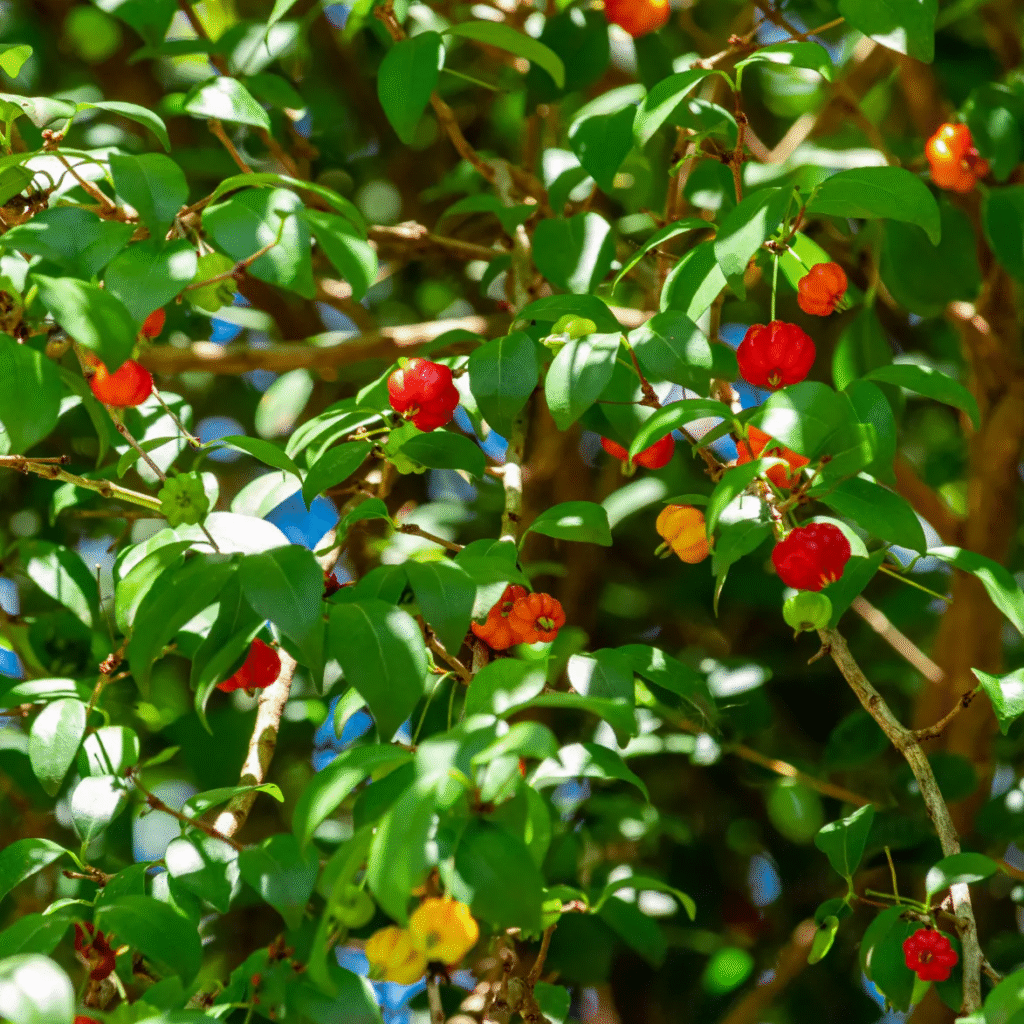
Common Pests and Organic Solutions
Monitor regularly for:
- Scale insects: Control with horticultural oil or neem oil applications
- Spider mites: Address with strong water sprays or insecticidal soap
- Fruit flies: Use traps and harvest fruit promptly when ripe
- Caribbean fruit fly: In Florida and other Gulf states, follow USDA APHIS recommendations for monitoring and control
For organic gardeners, introducing beneficial insects like ladybugs and lacewings can help maintain pest populations at manageable levels.
Disease Prevention
Prevent common diseases by:
- Ensuring good air circulation around plants
- Avoiding overhead watering
- Removing fallen leaves and fruits
- Applying organic fungicides if leaf spot or anthracnose appears
Most diseases affecting Suriname cherry can be prevented through proper cultural practices rather than chemical interventions.
Harvesting and Using Your Suriname Cherry
The most rewarding aspect of growing Suriname cherry is harvesting and enjoying the unique fruits.
When and How to Harvest
Suriname cherries typically produce two main fruiting seasons in most U.S. growing zones, with the heaviest in spring and a lighter crop in fall. Harvest indicators include:
- Deep red to dark purple color
- Slight softening when gently squeezed
- Sweet aroma
- Fruits that come away easily from stems
Pick fruits by gently twisting or clipping to avoid damaging the plant. Ripe fruits don’t store well, so harvest only what you can use within 2-3 days.
Culinary Uses and Preservation
The distinctive, resinous flavor of Suriname cherry works well in:
- Jams and jellies
- Fruit sauces
- Mixed into yogurt or ice cream
- Smoothies and fruit punches
- Wine making
For preservation:
- Freezing: Wash, remove seeds, and freeze in single layers before transferring to containers
- Jam making: Combine with apple or other pectin-rich fruits for better set
- Dehydrating: Thinly sliced fruits can be dried for snacks or tea additions
In the U.S. market, value-added products from home-grown Suriname cherries could potentially be sold at farmers’ markets or specialty food stores, though commercial production remains limited.
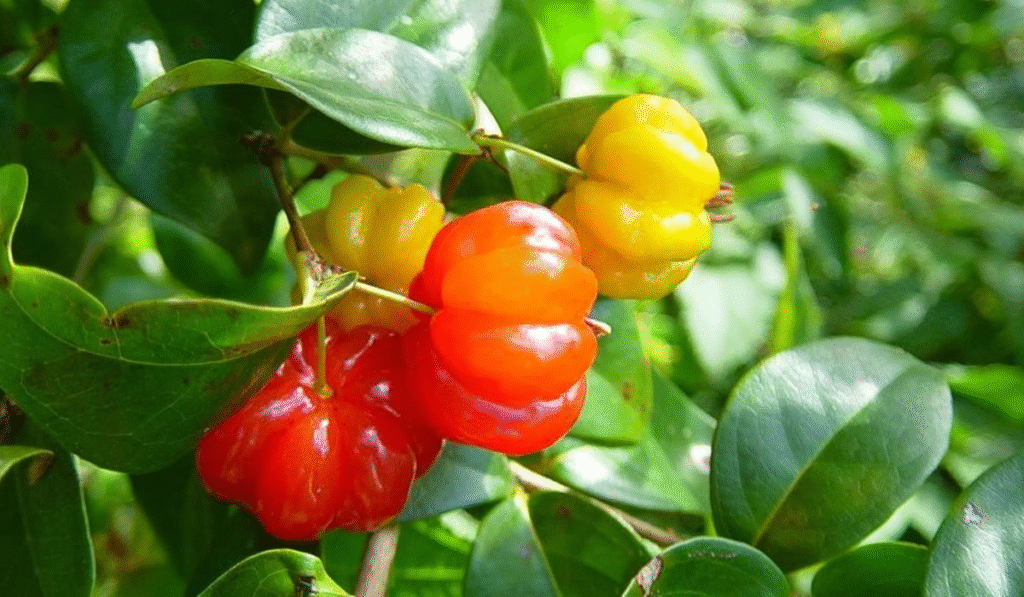
Adapting to U.S. Growing Conditions
Suriname cherry cultivation in the United States presents both opportunities and challenges depending on your region.
Climate Adaptations for Different Regions
- Southern Florida, Hawaii, and Puerto Rico: Nearly ideal growing conditions; can be grown as landscape plants year-round
- California and Gulf Coast: Good growing conditions with occasional frost protection needed
- Southeast: Can thrive with winter protection or as container plants moved indoors
- Northern states: Best grown as container plants that spend summers outdoors and winters indoors near bright windows
According to the USDA Plant Hardiness Zone Map, Suriname cherry is best suited for zones 9b-11, though creative gardeners in zones 8-9a often succeed with protective measures during cold snaps.
Overwintering Strategies
For growers in marginal zones:
- Plant near buildings or walls for additional warmth
- Use frost cloth or blankets during freezing events
- Apply mulch to protect root systems
- Install temporary frames with plastic covering for young plants
- Use Christmas lights (old-style incandescent) under covers to generate heat
Container growers should move plants indoors before temperatures drop below 40°F for extended periods.
Conclusion
Growing Suriname cherry offers U.S. gardeners an opportunity to expand their edible landscape with an attractive, productive plant that stands out from common garden offerings. With proper site selection, consistent care, and protection from extreme weather, you can enjoy the unique fruits and ornamental value of this tropical gem even in less tropical parts of the country.
Whether you’re an experienced fruit grower looking to diversify your garden or a novice interested in trying something exotic, Suriname cherry’s adaptability to different growing methods makes it accessible to many. The plant’s dual purpose as both ornamental and edible also aligns well with the growing trend toward functional, sustainable landscaping across American gardens.
By following the guidelines in this article and adapting them to your specific growing conditions, you’ll be well on your way to successfully growing and enjoying this delightful tropical fruit at home.


